Stunning mosaic paving stones depicting an owl, a duck and a fawn from the first century have been unearthed under a construction site in southern France.
The artwork made up the floor of a grand Roman building inside the mysterious city of Ucetia, a settlement which was previously only known by name.
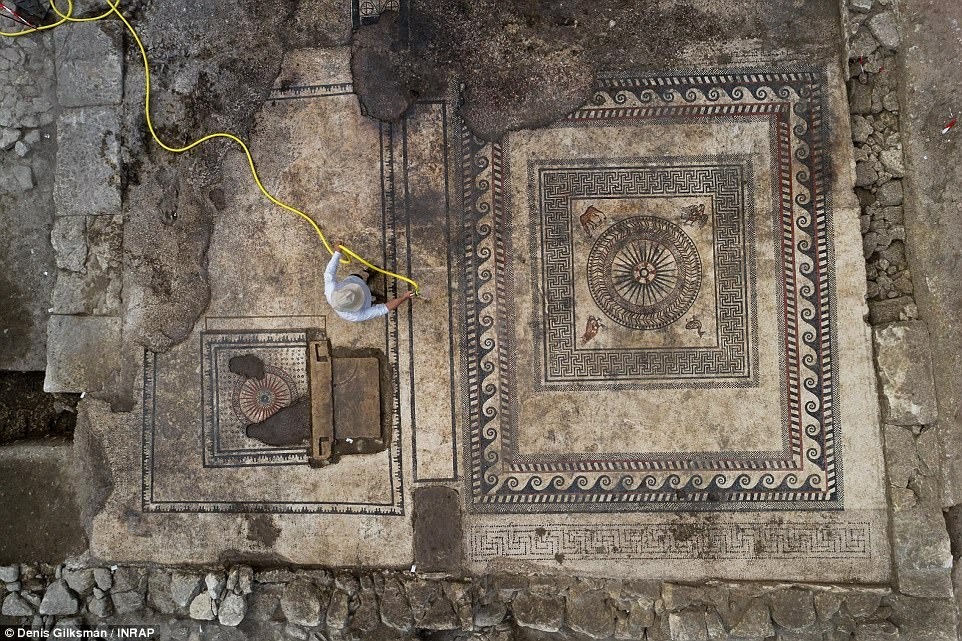
But now archaeologists have uncovered a complex network of buildings, including an ancient bakery, inside the secret city’s walls.
The surprise discovery was made during an excavation of the modern-day city of Uzes in southern France.
The existence of the city was first discovered when researchers found ‘Ucitia’ inscribed on a stone slab in nearby Nimes.
But no evidence of the city was found until a 43,056 sq ft (4,000m sq) site was excavated by archaeologists to make way to build a boarding school and canteen.
‘Prior to our work, we knew that there had been a Roman city called Ucetia only because its name was mentioned on stela [a stone slab bearing an inscription] in Nimes, alongside 11 other names of Roman towns in the area,’ Philippe Cayn, from the French National Institute for Preventive Archaeological Research, told IBTimes.
The team uncovered a settlement that they believe was occupied from first century BC to the seventh century AD.
They also discovered structures that appeared to be from the Middle Ages.
Archaeologists excavated a large wall and relics of buildings believed to have been inside the walls of Ucetia.
Discoveries included a room that was home to an ancient bread oven, which was later replaced with a dolium – a large ceramic container.
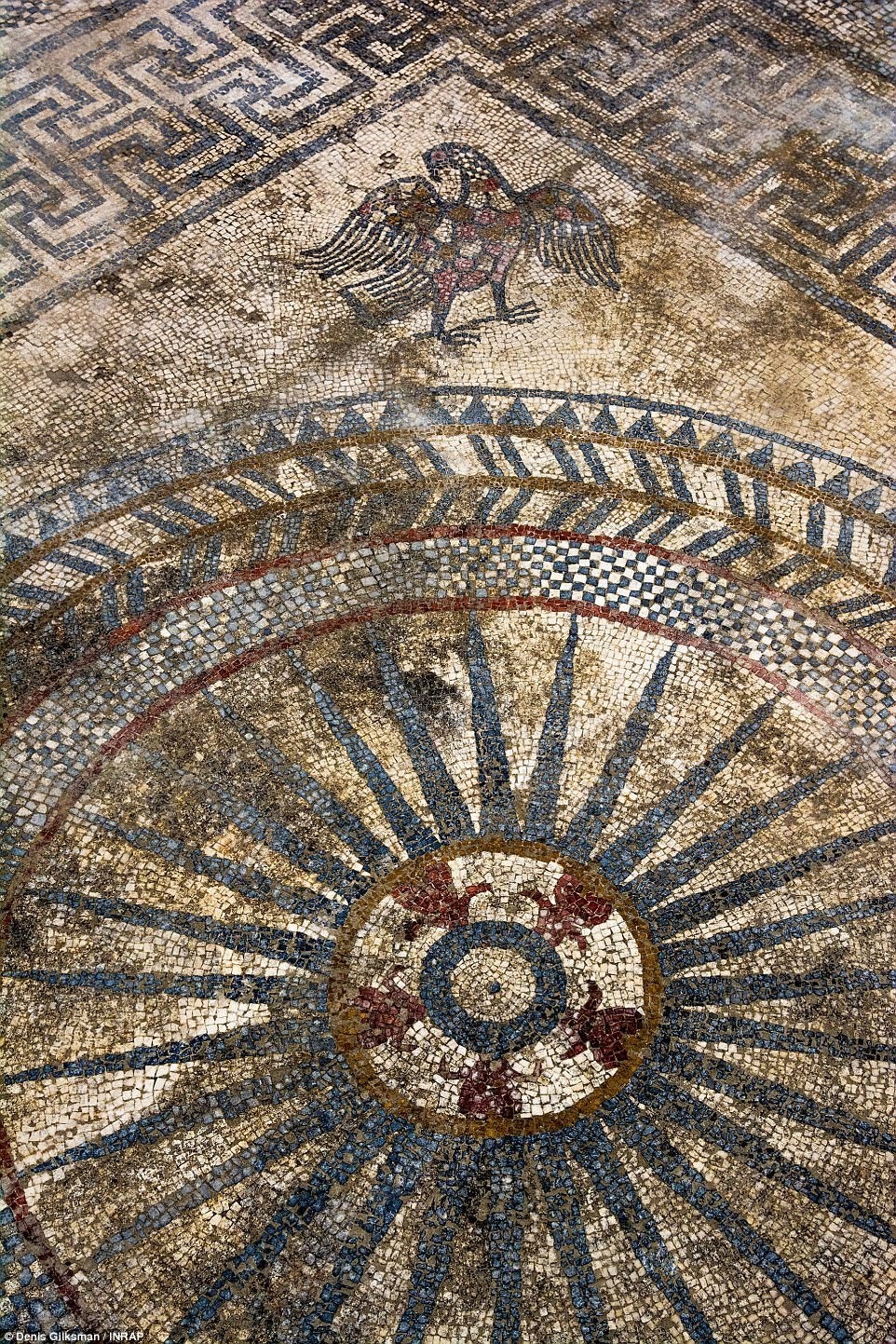
The second mosaic, which made up the paving stones of an ancient building, depicts a large medallion surrounded by animals including an eagle (pictured)
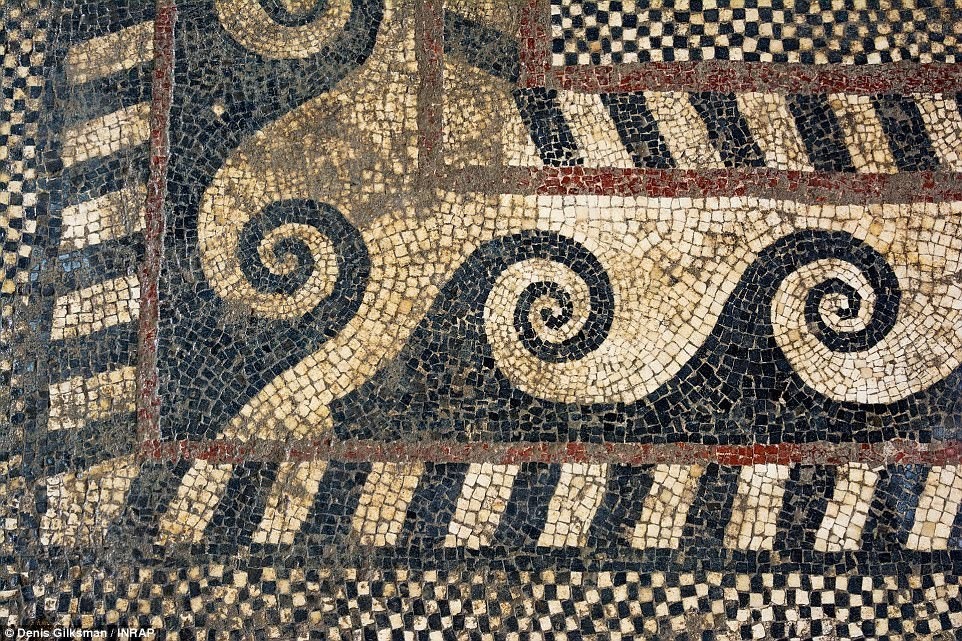
The elaborate paving stones, believed to be from close to first century BC, were inspired by beauty from the natural world. This intricate pattern depicts the ocean’s swirling waves
The complex network of buildings unearthed by the team suggested that the excavation site in Uzes was the central hub of the lost city.
But archaeologists were most impressed by the discovery of a number or ornate mosaic paving stones.
Believed to have once made up a floor of a grand building, the stones depict woodland animals in incredible detail.
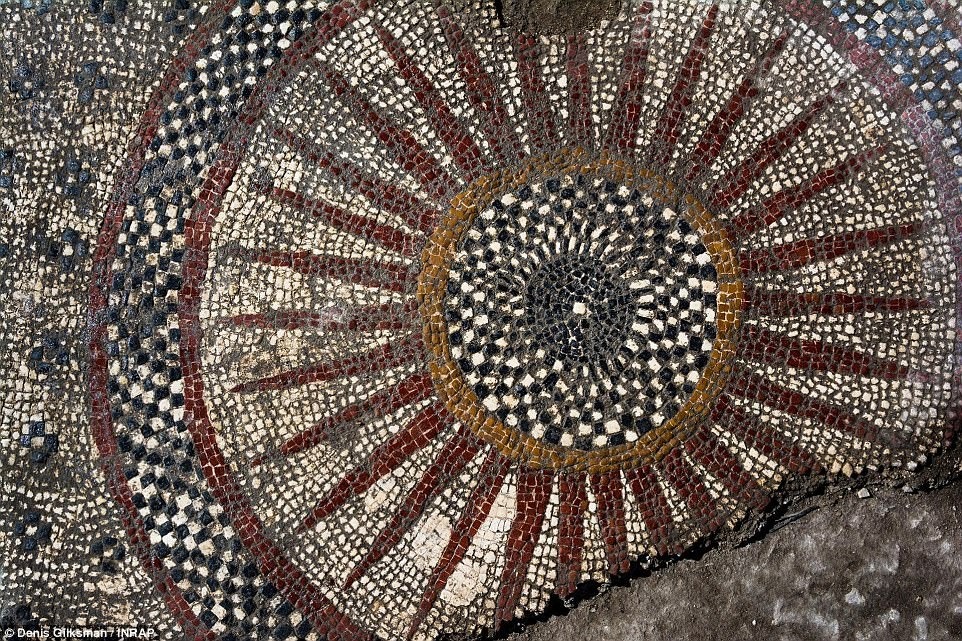
A large sun-like pattern takes up the centre of one of the mosaics. The mosaic paving stones may have belonged to a public building or a luxurious Roman manor
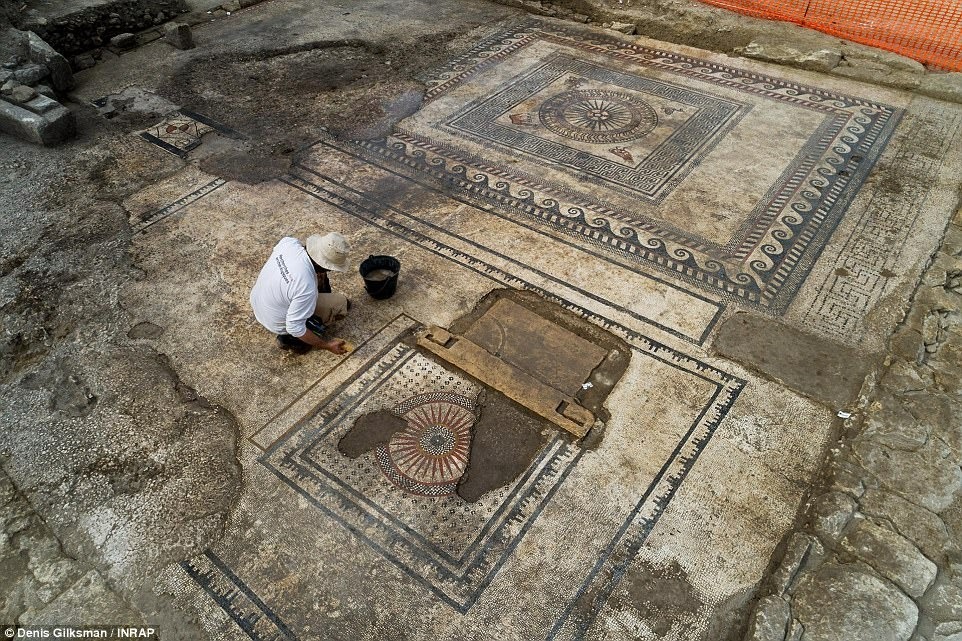
The mosaic is pictured being cleaned by an archaeologist from the French National Institute for Preventive Archaeological Research
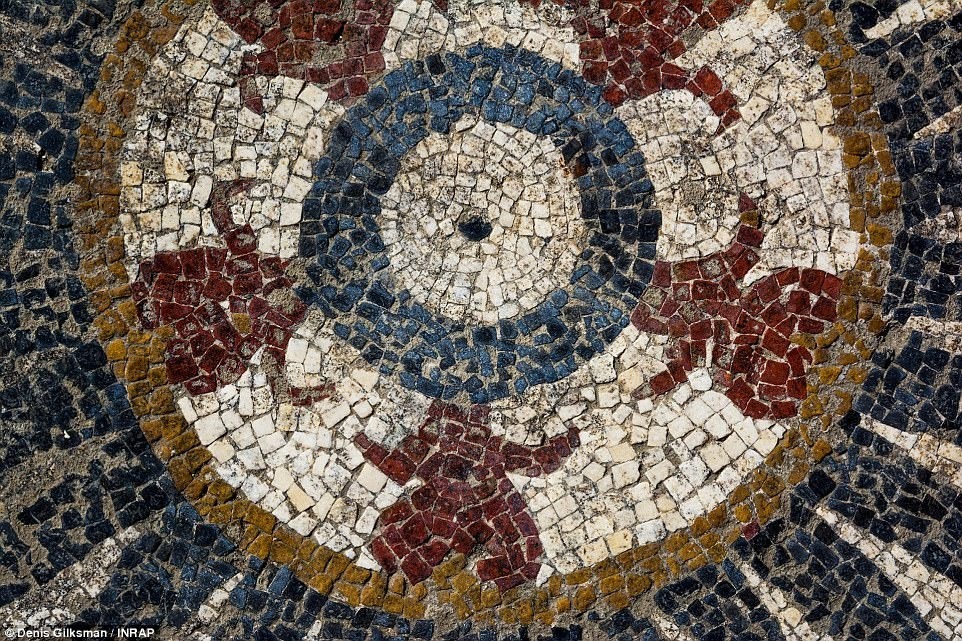
The surprise discovery of the intricate pieces of art was made during an excavation of the modern-day city of Uzes in southern France
The 820 sq ft (250m sq) building where the mosaics were discovered, which was supported by a number of enormous pillars, is believed to be one of the first structures to be built in the city.
‘This mosaic is very impressive because of its large size, its good state of conservation and the motifs which combine classical geometric shapes and with animals,’ Mr Cayn said.
‘This kind of elaborate mosaic pavement is often found in the Roman world in the 1st and 2nd centuries, but this one dates back to about 200 years before that, so this is surprising.’
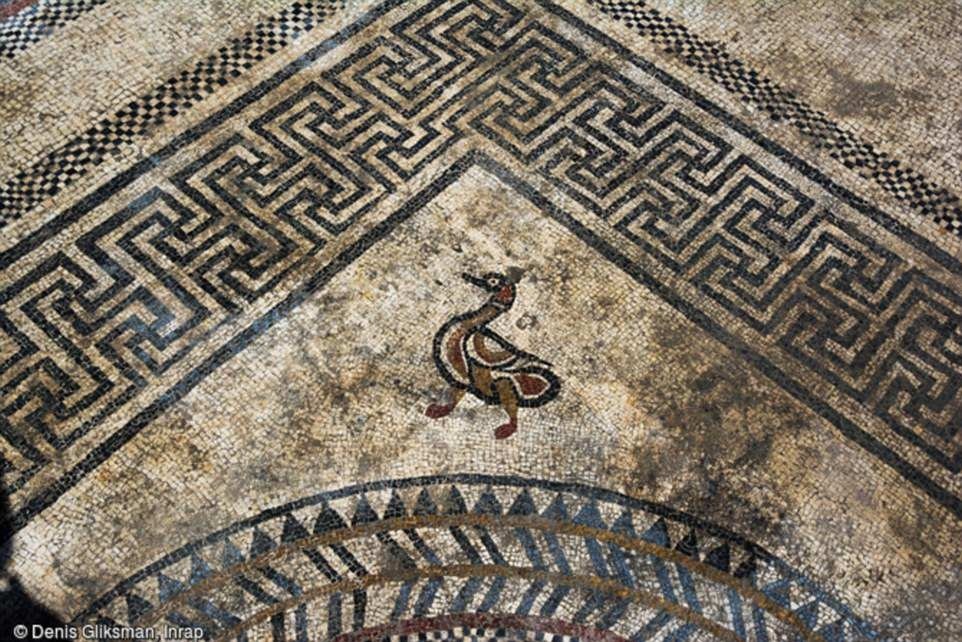
A duck is pictured in one of the large mosaics. The building is part of a settlement that was occupied between first century BC to the seventh century AD
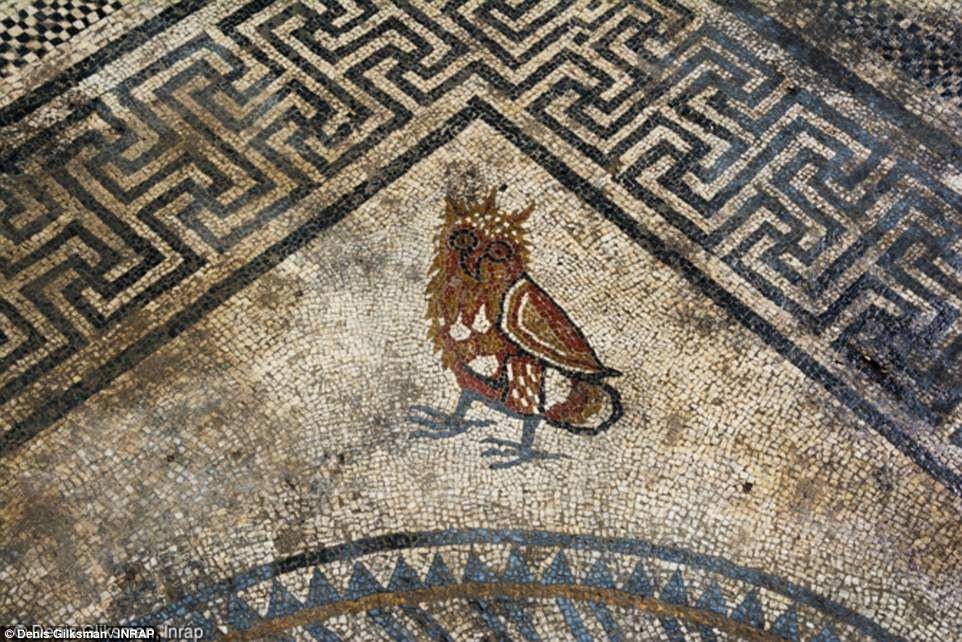
An owl is depicted in the ancient artwork. The 820 sq ft (250m sq) building where the mosaics were discovered, which was supported by a number of enormous pillars, is believed to be one of the first structures to be built in the city
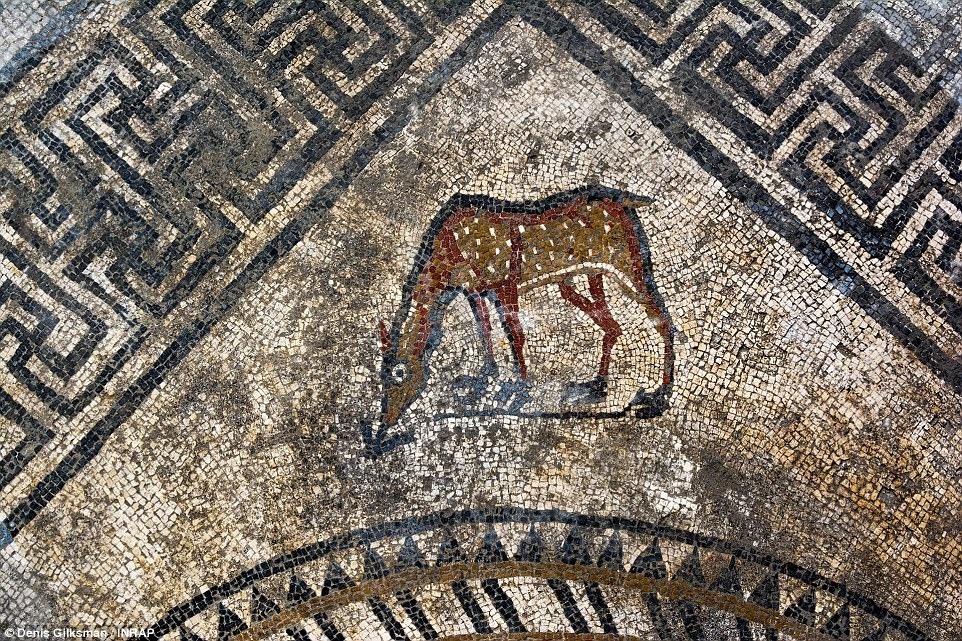
A spotted deer is pictured. ‘This mosaic is very impressive because of its large size, its good state of conservation and the motifs which combine classical geometric shapes and with animals,’ said the archaeologist who led the excavation
The team found two large ornate mosaics decorated with patterns inspired by the natural world.
The first is covered in geometric patterns which frame two central medallions made from crowns, rays and V-shaped stripes.
The second depicts a large medallion surrounded by an owl, a duck, an eagle and a fawn.
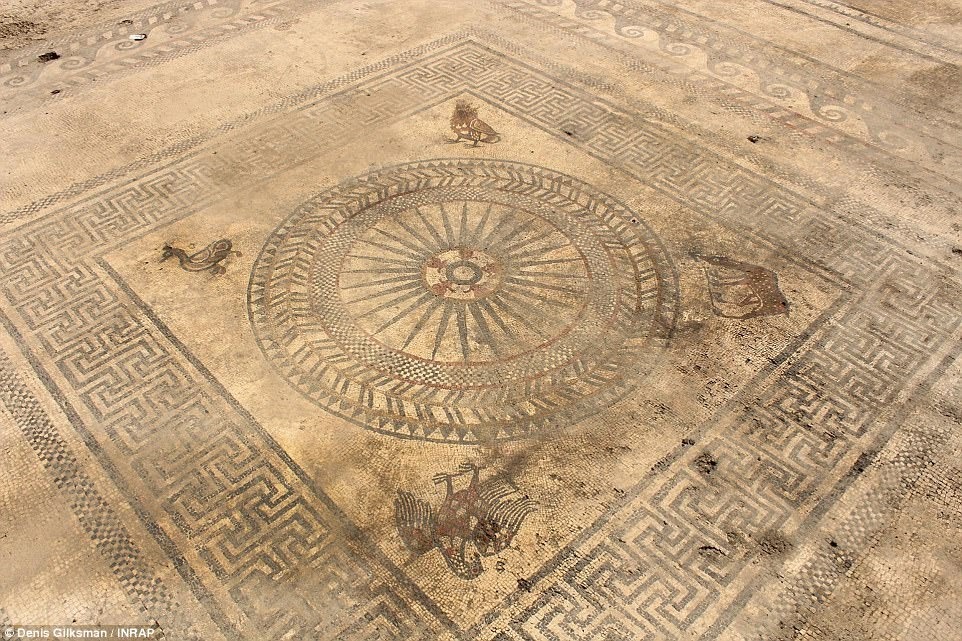
A view of the mosaic before it was cleaned by the research team. Archaeologists are still not sure what the ornate Roman building was used for
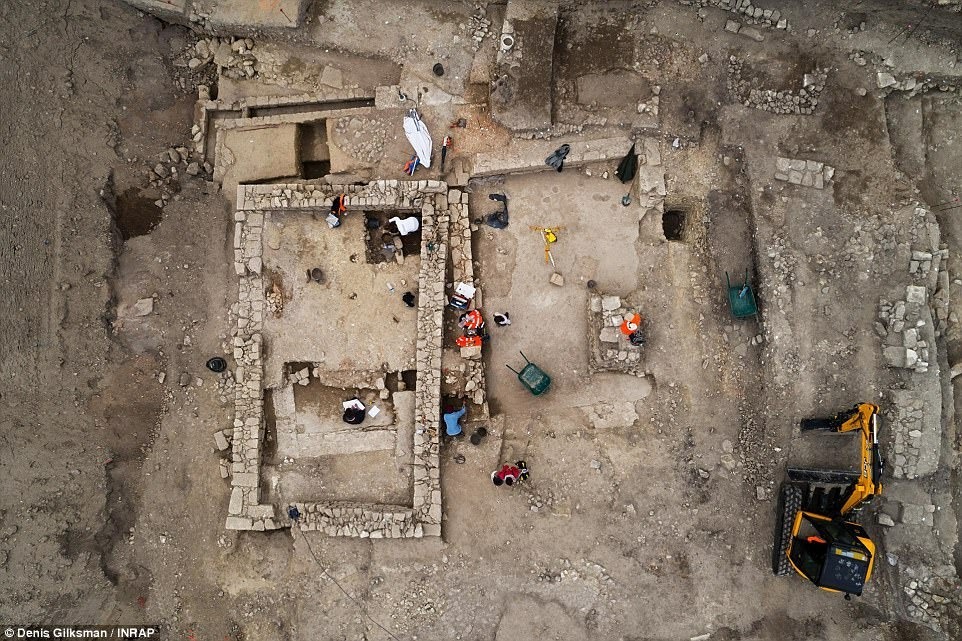
An overhead view of the building where the mosaics were discovered. Archaeologists also excavated a large wall and relics of buildings believed to have been inside the walls of Ucetia
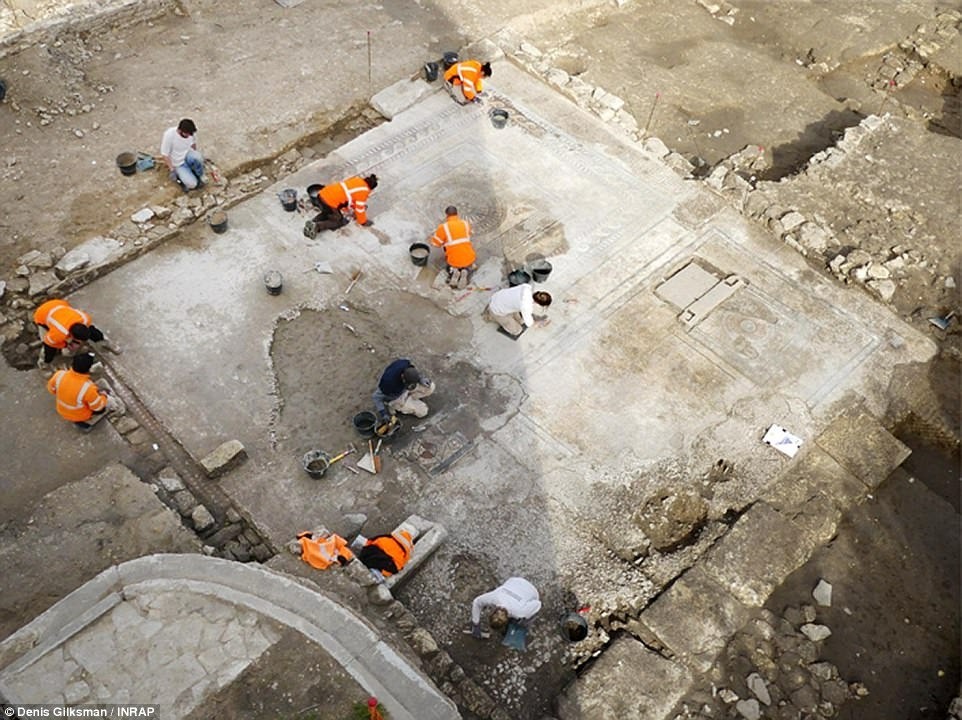
A team of archaeologists clean the floor of the discovered building. Researchers said the large pillars found alongside the room indicate that the structure may have been a public building
Archaeologists are still not sure what the ornate Roman building was used for.
Mr Cayn said the large pillars indicate that the structure may have been a public building.
But he added that is was possible the elaborate floors were part of a luxurious private home.
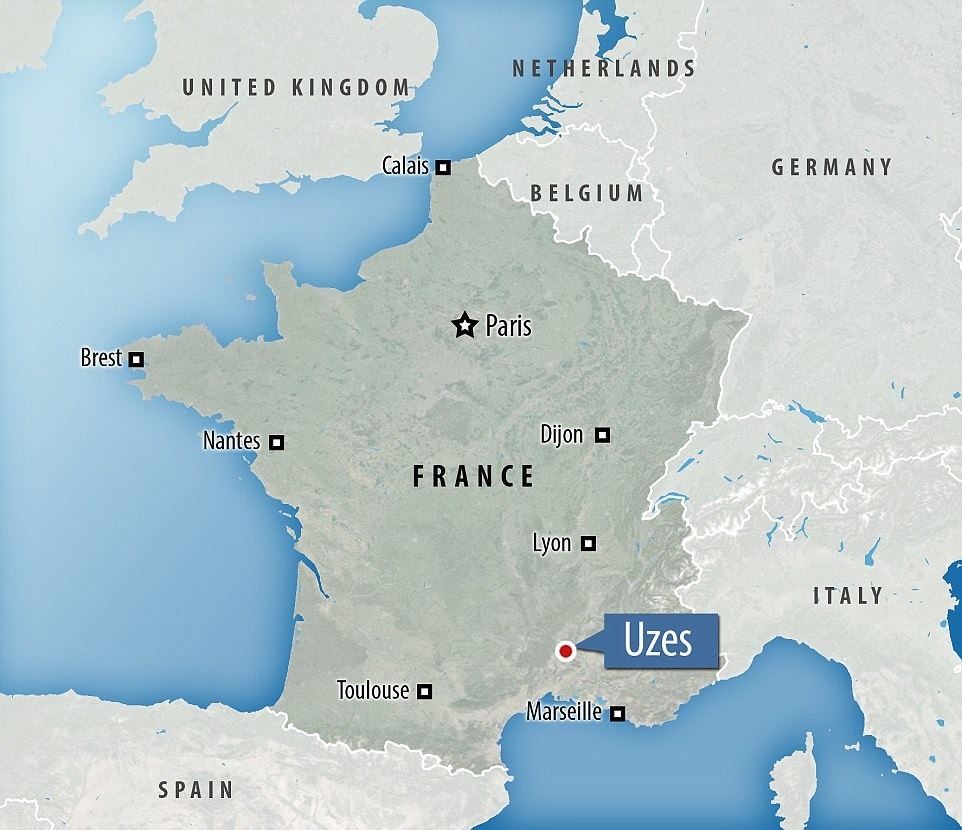
The surprise discovery was made during an excavation of the modern-day city of Uzes in southern France. Excavation work will continue until August of this year
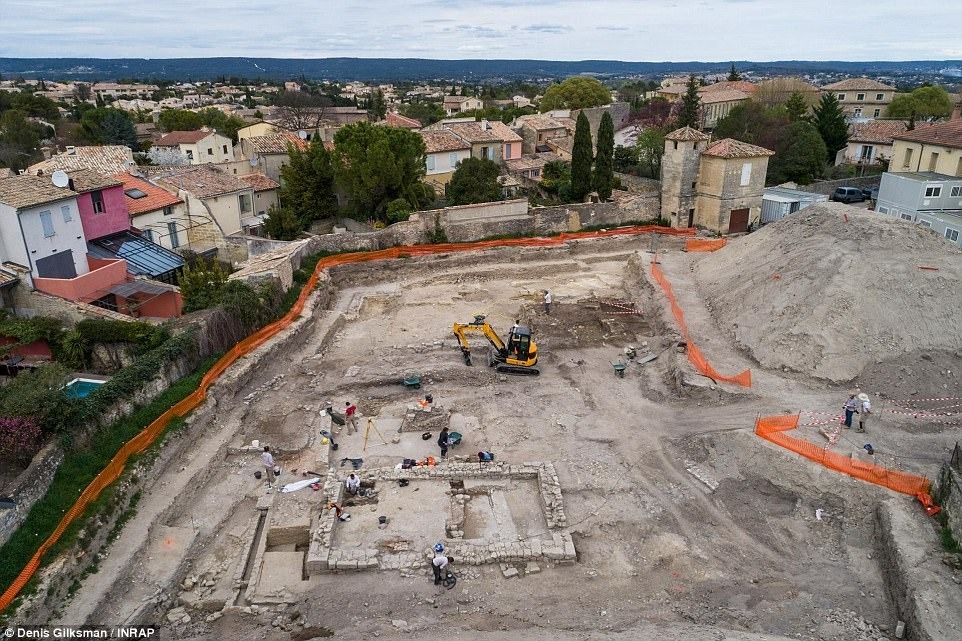
Aerial view of the excavation site in southern France. The building was found inside a complex network of ancient buildings, including a Roman bakery
‘True, not that many people would have been able to live in such a large building,’ he said.
‘But it’s possible that the owner of these mosaics was quite rich.
‘He [or she] probably would have had them placed in a reception room, to impress visitors and show the extent of his wealth.’
Excavation work will continue until August of this year.
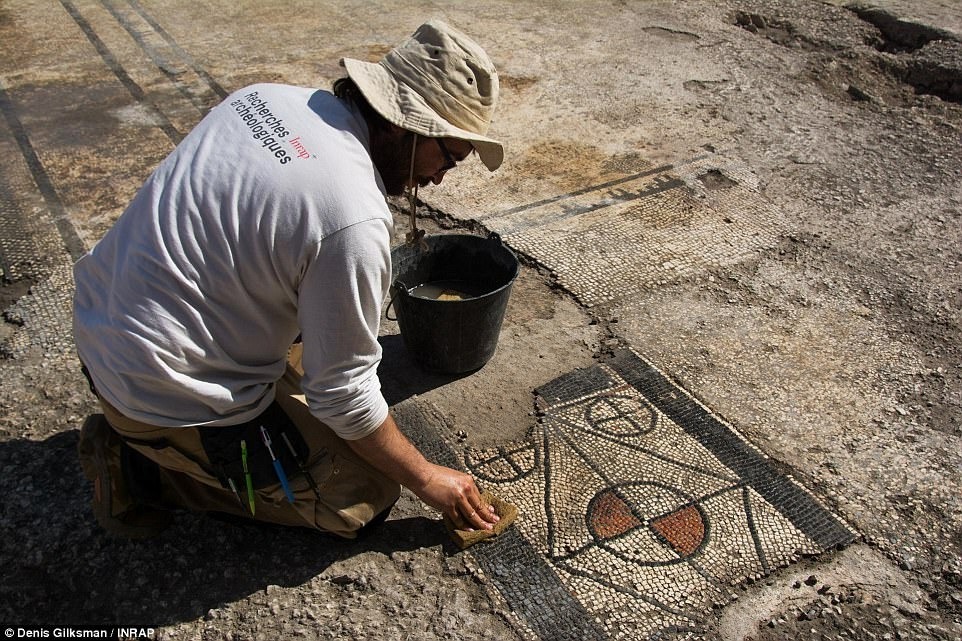
A researcher scrubs dirt away from part of the intricate mosaic. Researchers have suggested the floor may have been part of an elaborate reception room
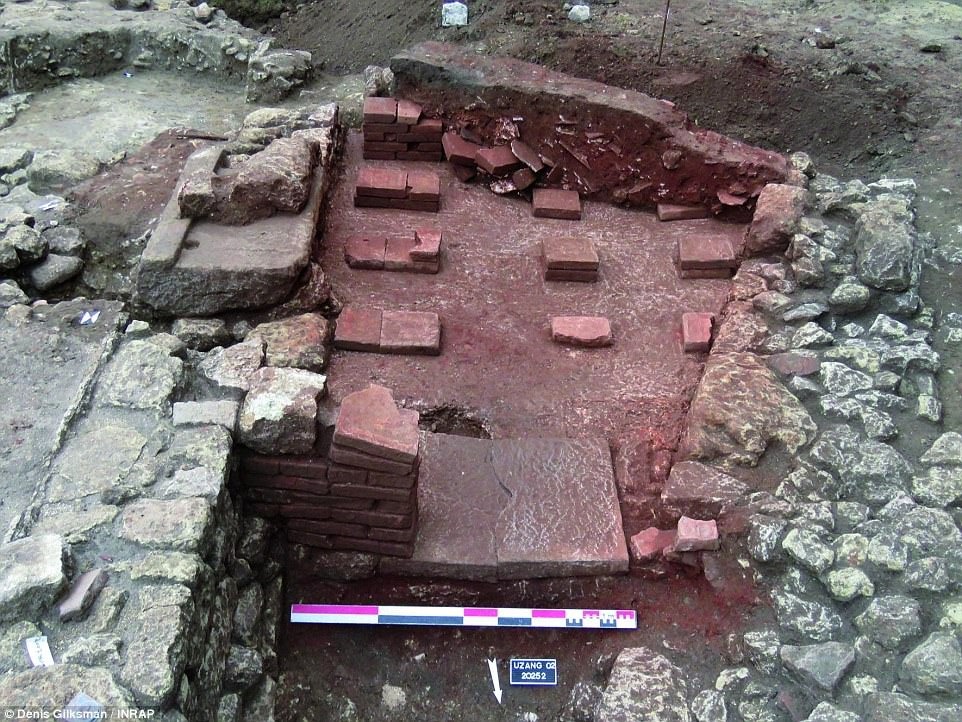
A domestic heating system (hypocaust), uncovered at the southwest corner of the excavation site. It consists of a crawl space containing brick piles, which were used to gather heat

Archaeologists dig among the ancient Roman ruins at the excavation site. Researchers said the artwork may have been a symbol of wealth in ancient Rome

Leave a Reply